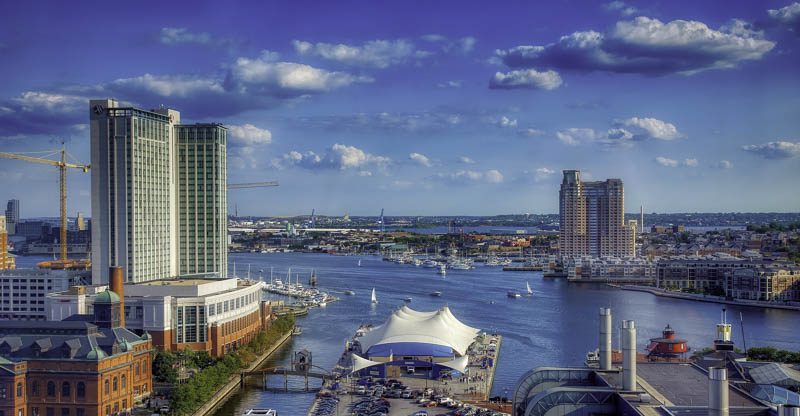Home » Cost Guides » Maryland Cost Guides » How Much Does it Cost to Build a House in Baltimore?
Aside from its vital role in the American Revolution, Baltimore is also known as the “City of Neighborhoods.” The city has over 232 neighborhoods home to more than 575,584 residents. Baltimore’s diverse and thriving economy has attracted residents to relocate, thus making it the most populous city in the state of Maryland and is responsible for nearly 25% of the region’s population. The city is also within close proximity of Washington D.C. and has led various agencies to station their headquarters in the city, including the U.S. Cyber Command, Social Security Administration, and the National Security Agency.
Despite Baltimore’s 0.53% decline in job growth, numerous industries are fastly growing along with the city’s progressive recovery from the global pandemic. Construction, manufacturing, trade and transportation, and financial activities are reportedly the leading industries. These, along with Baltimore’s life sciences, IT, logistics, manufacturing, healthcare, agriculture, and energy industry, are continuously convincing the working class to move here.
Upon relocating to a new city, future residents must first secure a home. Homeowners can either rent, buy, or build a new one. For those wanting to build in this city, we have listed the various aspects to be considered to build a home in Baltimore.
The Cost of Building a Home in Baltimore
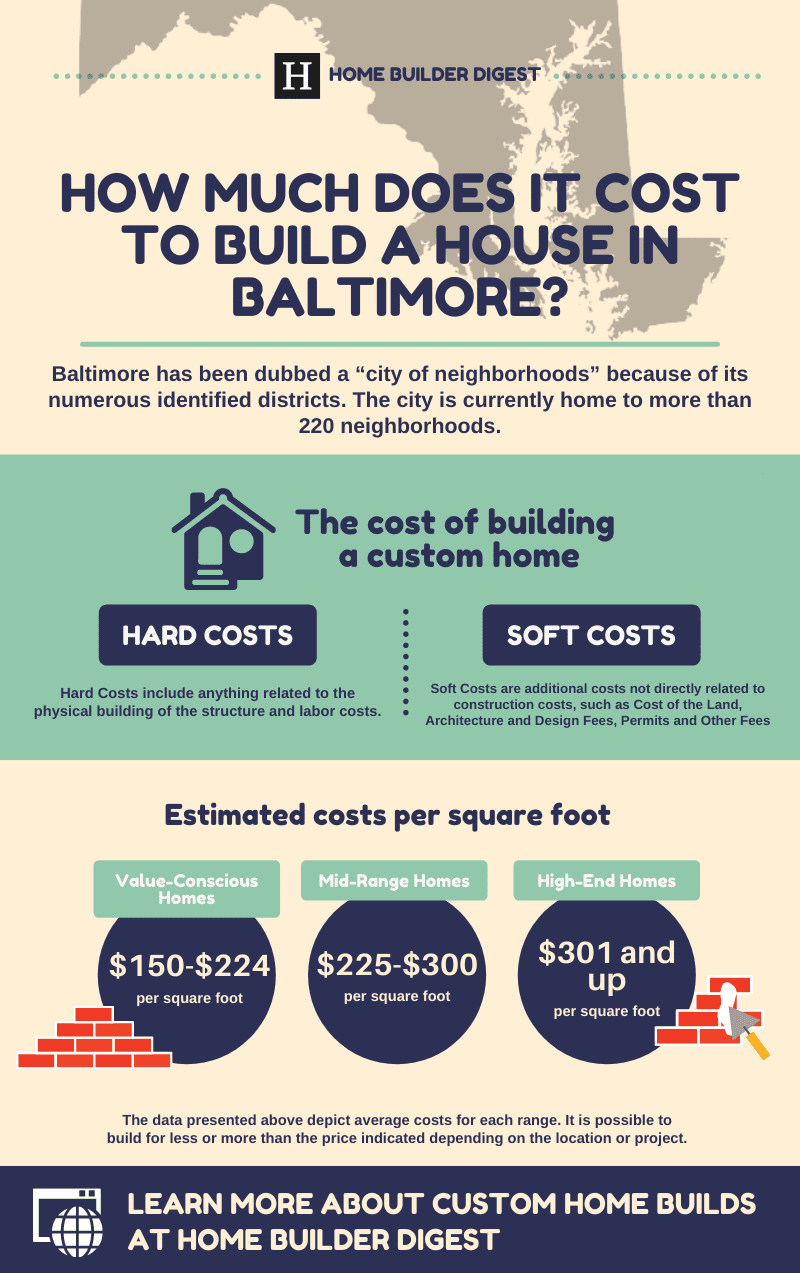
Building one’s home is a dream for many. When building, homeowners can customize everything–from large paint jobs to details like the doorknobs to making the home most functional for every household member. In addition, new homes are more energy-efficient, and include state-of-the-art materials, appliances, and systems.
According to the National Association of Home Builders (NAHB), the average median price of a new home is $346,757. The association reported that homes across the country have increased by $1,000 due to multiple reasons, including the COVID-19 pandemic, supply chain issues, and labor shortages. The location, size, complexity, and level of customization also directly affect the price.
For homes built in Baltimore, home building costs range from $150 to $300 per square foot — approximately $300,000 to $600,000 for a 2,000-square-foot home. More specifically, value-conscious homes cost $155-$224 per square foot, mid-range homes cost $225-$300 per square foot, and high-end homes cost $301 per square foot and more.
However, Baltimore was not safe from the recent price surge, as the city experienced a 16.1% rate of increase compared to the previous year. To build most efficiently, a detailed plan is necessary and must be strictly followed to stay within the project cost and remain time-efficient. Thus, we have listed some factors and their respective price range needed to be considered in building a home. These are divided into two categories: hard costs and soft costs.
Hard Costs
Hard costs refer to the various expenses involved in the actual construction of the physical home. These include the materials, labor, landscaping, and roofing, as well as electrical, plumbing, HVAC, and other extra amenities.
Building a house in Baltimore typically costs $147.08 per square foot for finished livable space only and excludes excavations, basement finishing, site developments, and landscaping. The total basic construction costs will be around $294,160 for a 2,000-square-foot home. This value will increase or decrease depending on the choice of materials, level of finishing, and labor costs. With the labor fees included, the value may rise up to $300 per square foot, bringing the total building expense to $600,000. Remember that these are only estimates, and the labor fees will still depend on the general contractor.
Roofing
The most common roof seen in Maryland are the three-tab asphalt roofs. This type of roofing is often chosen because it’s affordable, easy to install, and durable — lasting up to 30 years. A three-tab asphalt shingle roof typically costs $3.50 to $5.50 per square foot, which is around $7,000 to $11,000 for a 2,000-square-foot home. This value is only the material itself and does not include other fees, such as labor and permitting fees. According to Remodeling’s Cost vs. Value Report, Baltimore’s average roof installation cost is approximately $28,256. The price includes materials, permitting fees, and labor costs.
HVAC, Electrical, and Plumbing
In addition to roofing, there are other amenities to install into a home to keep it safe and functional. Three aspects fall into this category: HVAC, Electrical, and Plumbing.
HVAC refers to the Heating, Ventilation, and Air Condition of a home. It generates heat or cold air to keep a home habitable and comfortable. Despite being considered one of the most complicated systems to be installed in a home, it is necessary. HVAC installation in Baltimore costs around $2,798 to $13,989 and more. Hiring a qualified contractor is also a must to ensure everything is working well. These services cost approximately $1,250-$2,300, bringing the total cost for a HVAC system expense to $4,048-$16,289. The price varies depending on the type of HVAC system, size of the home, labor fees, and other additional features.
An electrical and plumbing system is needed to keep the home functional. Oftentimes, plumbing systems are often installed first as the water supply, drain pipes, and waste pipes will be installed within the home’s studs and framing structure. It can also be safer and more manageable when electricians install the electrical wirings and components as it can work around the pipes and plumbing materials. According to HomeAdvisor, plumbing in Baltimore typically costs $483-$2,749, while the electrical system costs $736-$2,553. The total cost will depend on the materials used, labor fees, and level of complexity.
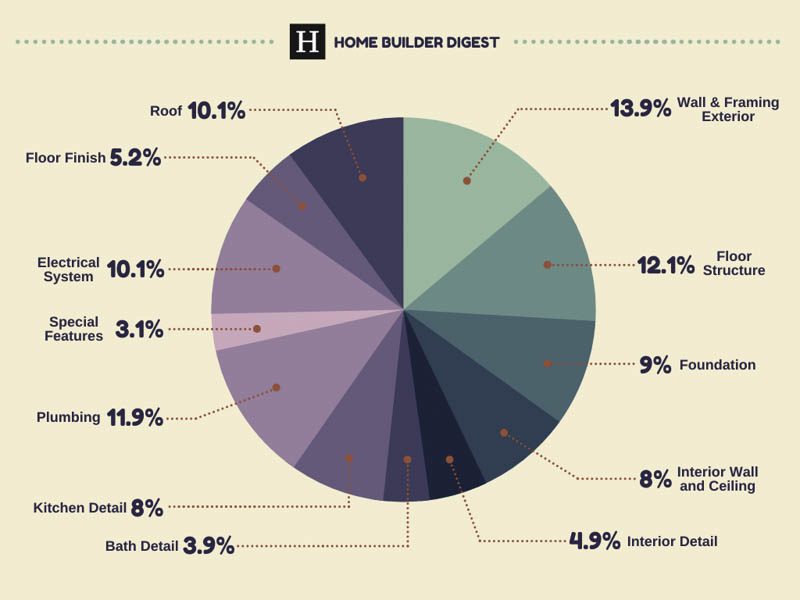
Figure 1. Typical cost breakdown of a single-family home constructed using the conventional method, according to Home Builder Digest. Image Source: National Cost Guide.
Soft Costs
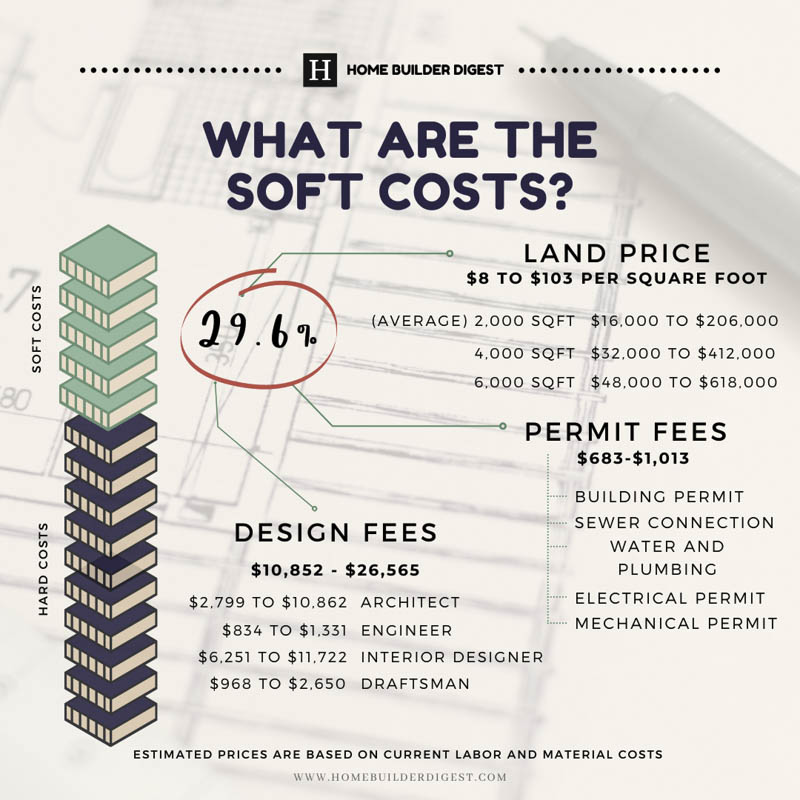
Figure 2. Soft cost percentage and average price range of additional fees, determined from the overall cost of custom home building in Baltimore.
Cost of the Land
Land costs often take a large chunk of the homebuilding budget, and they fluctuate depending on the state, city, and neighborhood. As reported by Zippia, states located in the Northeastern region of the country are often expensive. The state of Maryland is among the top 10 most expensive states to buy land. In this area, the average cost of an acre is around $75,429.
In regards to current land listings, Zillow shows the median cost in Baltimore to be around $52,686.96 or $8.11 per square foot, while the average listed land size is approximately 7,405.17 square foot or 0.17 acres. On the other hand, listings in Redfin have a median cost of $45,900 or $7.32 per square foot, and an average size of 6,614.30 square foot or 0.15 acres.
According to Inman and HomeAdvisor, the average lot size in Maryland is approximately 10,047 square foot, — 26% smaller than the national average, making it one of the top 10 states with the smallest average lot size. When the size is applied to the land costs in Baltimore, the total cost of land is approximately $73,554 to $81,481.
Permits and Other Fees
Every new home construction needs a building permit from the city government. This will ensure that the home is up to the standards and regulations imposed by the government. It will also guarantee the durability and safeness of the building for the homeowners and the community. In getting a permit, project managers, contractors, or architects must submit drawings and sketches of the proposed project. Upon reviewing the plans, approval from the board or committee will be needed before the construction starts.
According to the Building, Fire, and Related Codes of Baltimore City, the permit fee for new construction of 1- and 2- family dwelling homes is around $10 for each cubic feet of livable space, including all basements and cellars. A three-level, 2000-square-foot home with a standard ceiling height of 9 feet is approximately 54,000 cubic feet, which is around $540 for the permit fee. This estimated price excludes the garage, porches, and other extra amenities. The permit fee is directly relative to the size of the home. For example, when adding a 480-square-foot two-car garage, the total size of the home will increase to 66,960 cubic feet, which then increases the permit fee to approximately $670.
Securing a permit is also needed before installing the major systems. For electrical services, the fee will depend on how much amperes or the rate of electrical flow comes into the property. A 2,000-square-foot home typically needs around 200 amperes, and the permit fee for 200-400 amperes is $40. For the HVAC systems, the price depends on how many BTU/tons, or the system’s cooling and heating capacity A 2,000-square-foot home typically needs around 90,000 BTU or 7.5 tons. The permit for one ton costs $5, and when calculated, will cost approximately $37.50. Lastly, the installation permit for the plumbing system. Both the water service pipes and sanitary connection of single family dwelling homes cost $25 — a total of $50 for the plumbing works.
All of the permit fees combined will be approximately $800 for a 2,000 square foot home. Any additional size or capacity will increase the amount to be paid for its installation.
Architecture and Design Fees
Hiring an architect assists with the design and is a powerful guide that helps to incorporate everything needed for the home. Having a detailed plan will also ensure that everything is built accordingly and that little to no mistakes will be made.
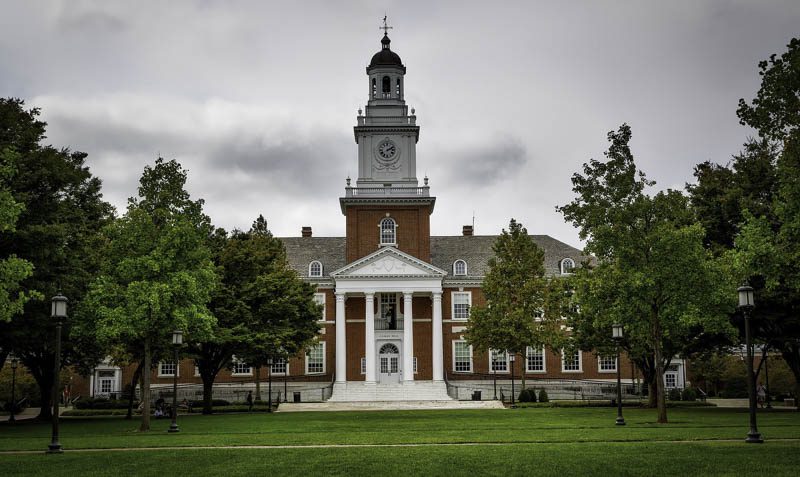
The most common method used by architects and designers to price their services is through percentage. Typically, 4%-8% of the total project cost is allocated to architectural and design fees. Some charge higher and may reach up to 12% as these designers are considered experts in the field, and usually award-winning.
Other factors that affect the design fees are the style of architecture, size of the project, location, and level of customization. Experts also suggest that setting aside 3% of the project budget may be beneficial as there may be other revisions, updates, or unforeseen circumstances during building.
How do Baltimore’s custom home building costs compare to other nearby cities?
The U.S. Census Bureau reported that Maryland is part of the country’s southern region, more specifically the South Atlantic. It has been recorded that the south has the cheapest median home price among the four areas with only $110.19 per square foot — around 14.5% lower than the national average. Although Maryland is in this region, the state is the 11th most expensive state to buy a house in with $190 per square foot, according to Business Insider. Maryland is also the second most expensive state in the region, following the District of Columbia with $547 per square foot.

Focusing on the Baltimore Metro Area (Baltimore-Columbia-Towson, MD), data from the online contractor platform BuildZoom (BZ) show that home building costs range from $125 to $271 per square foot. More specifically, value-conscious homes cost $125-$172 while mid-ties and luxury homes cost $173-$270 and $271 and more, respectively. This makes the metro area 10.4%-18% less than the national average. NAHB reported a greater difference between the metroarea and the national average of 30.5%, with home values priced around $265,533.
In addition, restate marketplace Zillow gives more context on the home values of cities near Baltimore. According to the site, homes in the Baltimore-Columbia-Towson metro cost $351,507 and have increased by 12.3% compared to the previous year. Zillow predicts that it will continue to rise up to 10.8% the following year. Moreover, Columbia’s home value has gone up to 12.1% compared to the previous year and now costs $433,510. On the other hand, Towson also experienced an increase in home values up to 10.4% and now costs $424,536. This trend continues to other major cities in Maryland and across the country due to home inventories hitting an all-time low. One of the factors involved is the supply chain issue and lack of labor force in the construction industry. The current median home value of other cities near Baltimore and its rate of increase compared to the previous year is as follows:
- Ellicott: $609,694, increased by 10.2%
- Bel Air: $401,540, increased by 12.1%
- Westminster: $404,837, increased by 16%
- Aberdeen: $277,004, increased by 13.6%
- Havre De Grace: $339,486, increased by 13.5%
- Catonsville: $366,582, increased by 10.3%
- Annapolis: $518,313, increased by 10.4%
What Leading Custom Home Builders and Architects that Serve the Baltimore Area Say
Aside from the mentioned aspects, we reached out to some of the best custom home builders and architects that serve Baltimore to gather more data about the building cost and trends in the area.

Rob Brennan of Brennan + Company Architects shared that everyone in the construction industry is being challenged by the price surges. Issues in labor and material costs, as well as their availability, drastically affected project designs and construction schedule. Rob, and everyone in the industry, are hopeful for better days.
The Future of Baltimore’s Residential Construction Industry
Almost every city in the country, including Baltimore, is experiencing a boom in the real estate market. The need for more conducive space is one of the reasons why people are on the hunt for their ideal homes. Home offices are generally the most sought-after feature in homes as professionals transition to the new normal or the work-from-home setups.
New single family homes are on the rise in Baltimore. According to the Baltimore Metropolitan Council, over 635 permits were issued from the first to the third quarter of 2021 — a 2476.2% increase from the previous year with only 59 permits issued. This is a testament to the city’s continuous recovery from the global pandemic. The surge of new home projects was buoyed by the increased demand and the industry’s low housing inventory, which is still below historical averages.
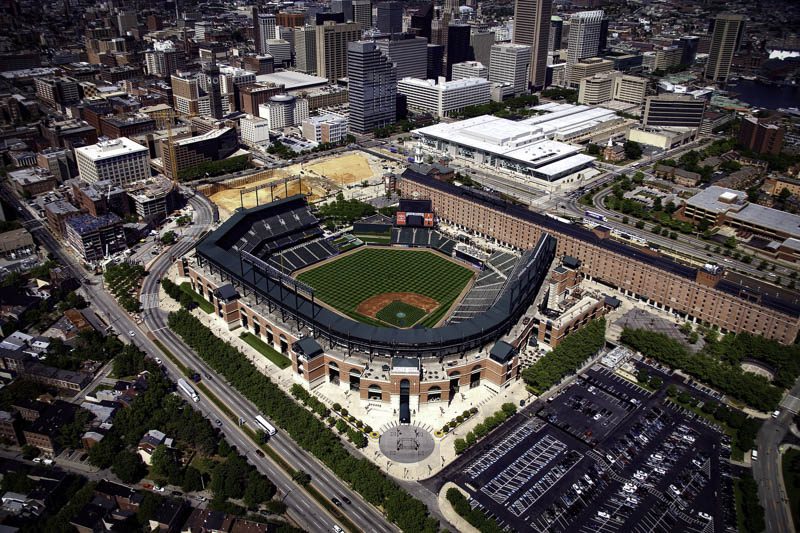
As mentioned above, various issues in the industry are yet to be resolved, pushing all home prices to inflate, including rental fees in the city that have increased by 3.2%. The Freddie Mac Housing Price Index (FMHPI) reported that homes in the Baltimore metroarea are expected to increase by 14.9% by next year and rise even further to 29.6% after five years.
Moreover, construction costs have increased to 7% compared to the previous year. Supply chain issues pushed the price of basic home building materials, such as softwood lumber, which is commonly used for framing. As per the National Association of Realtors, softwood lumber inflated up to 112% since April 2020, along with plywoods and hardwoods that increased by 77% and 32%, respectively. Approximately $36,000 is added to the average total building costs. This issue creates affordability issues for future Baltimore homeowners.
With all of this in mind, future homeowners must carefully plan each step of the building process before building a custom home.
Considering building a home in Baltimore?
Contact us for a free consultation

